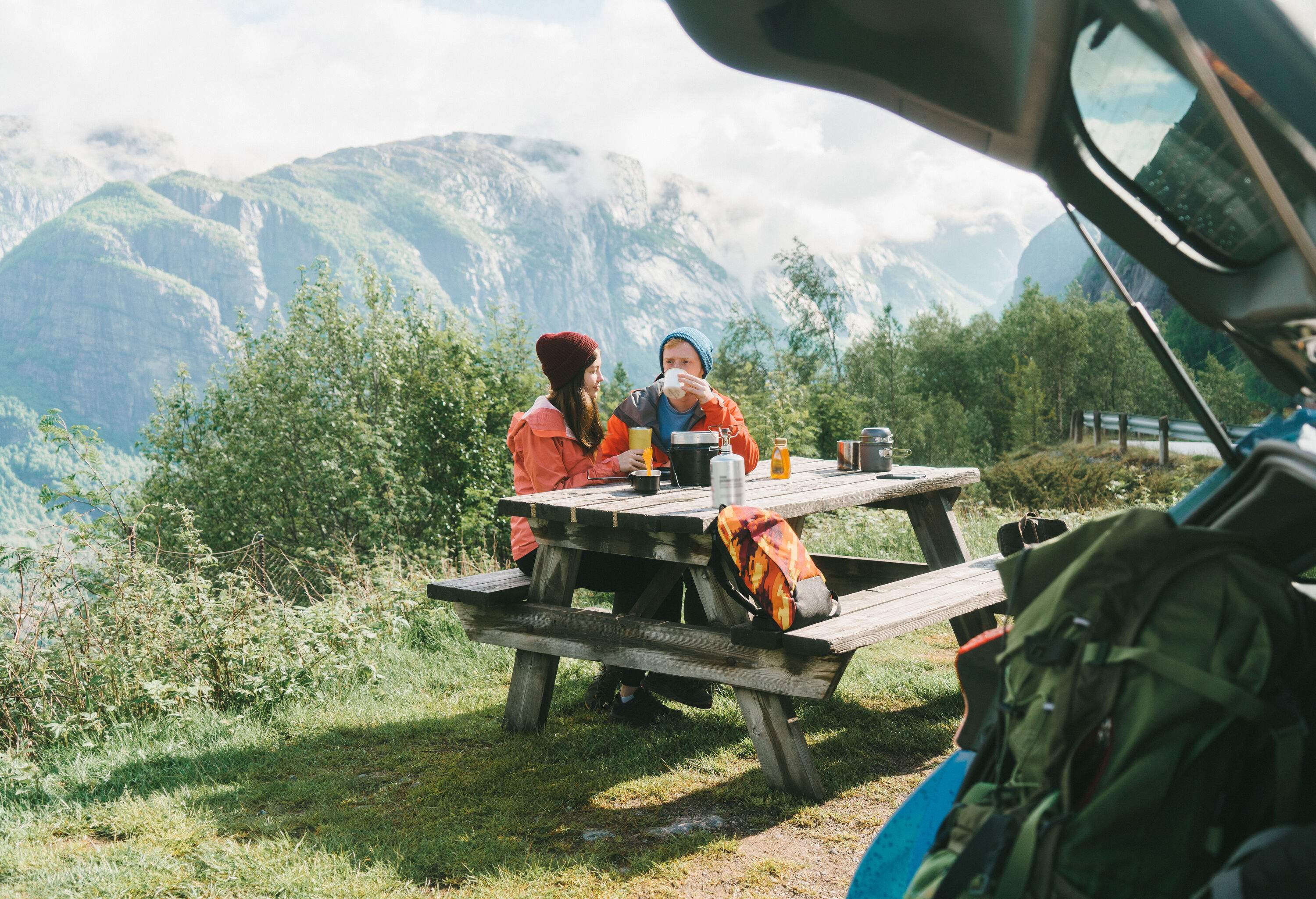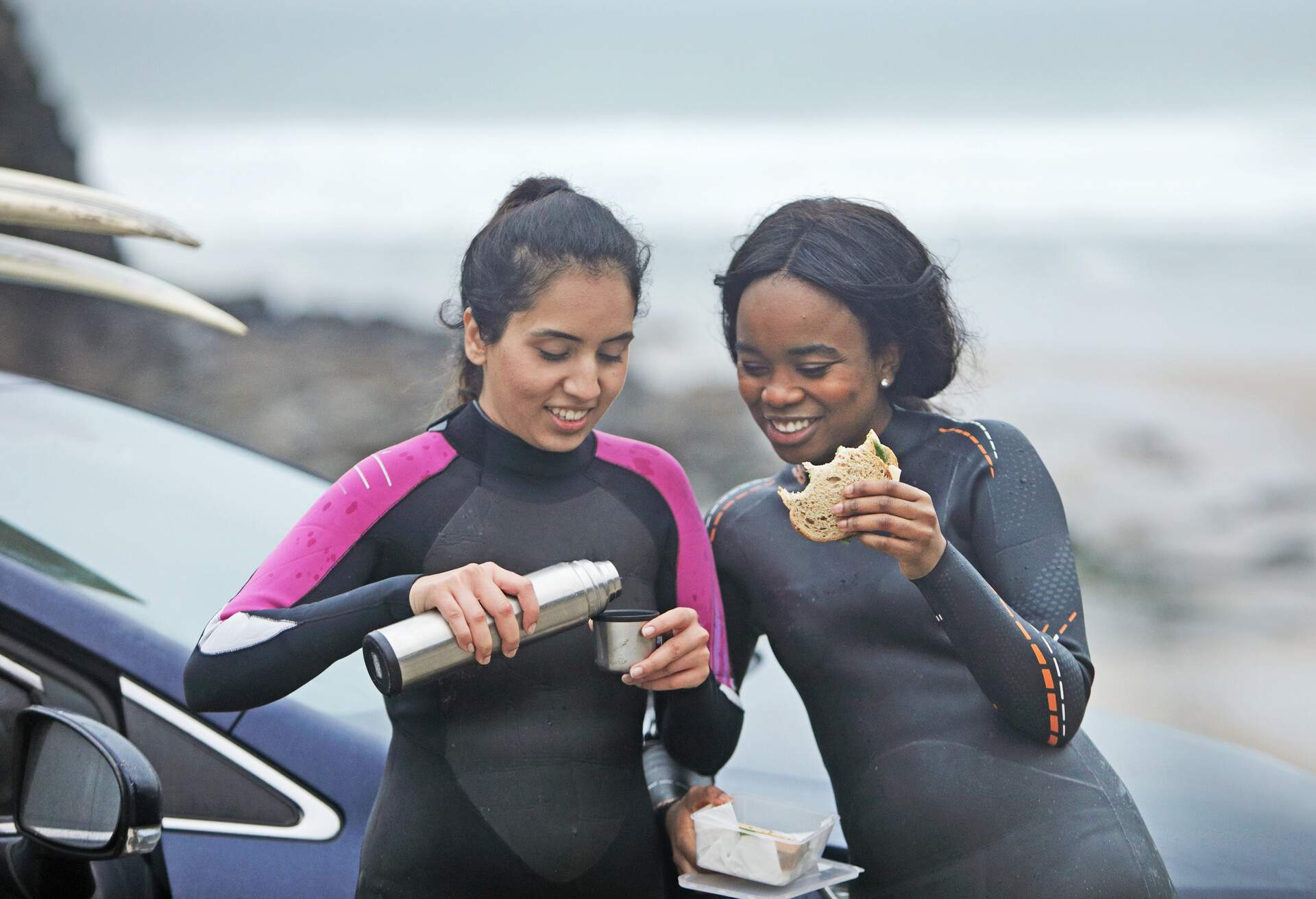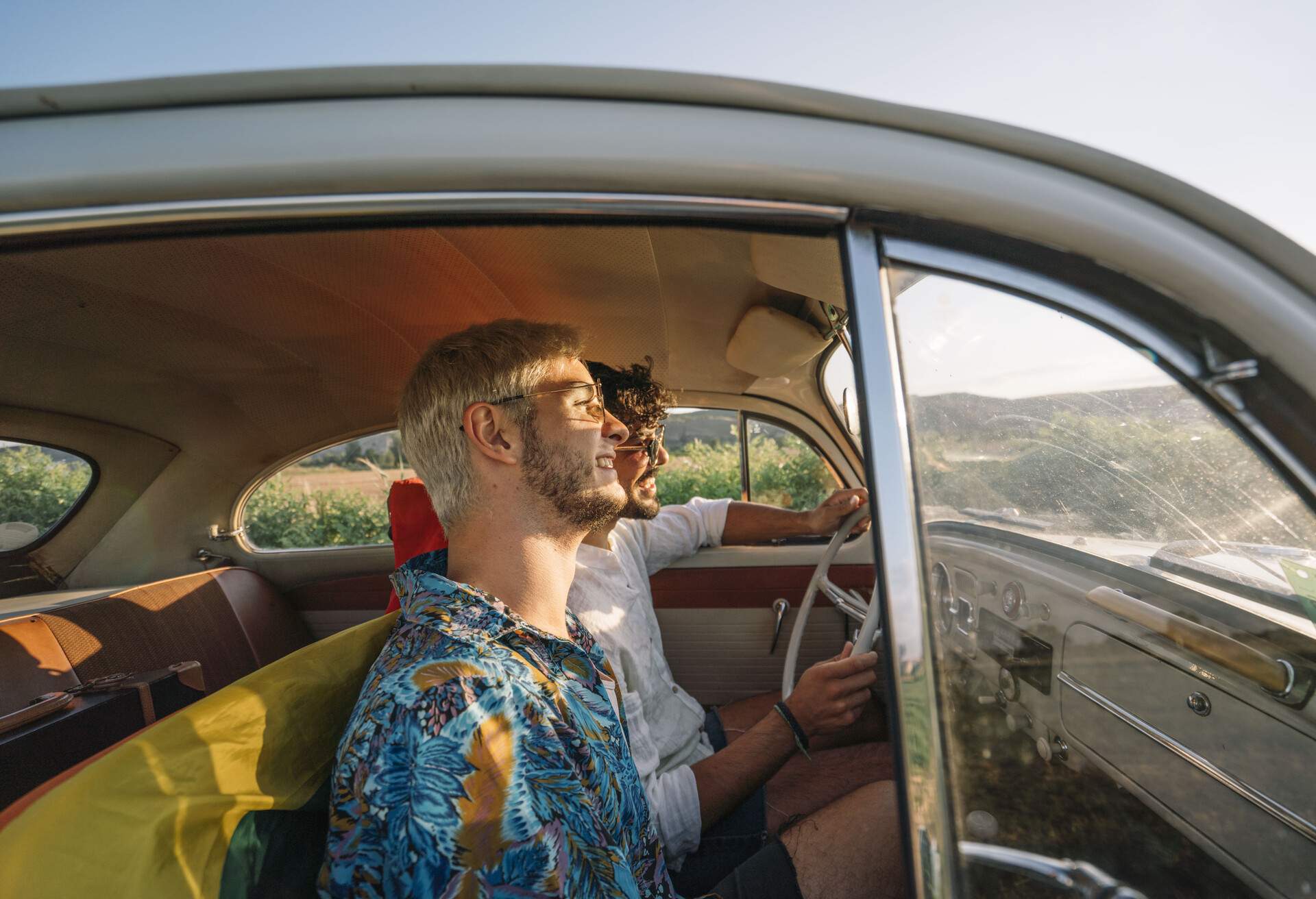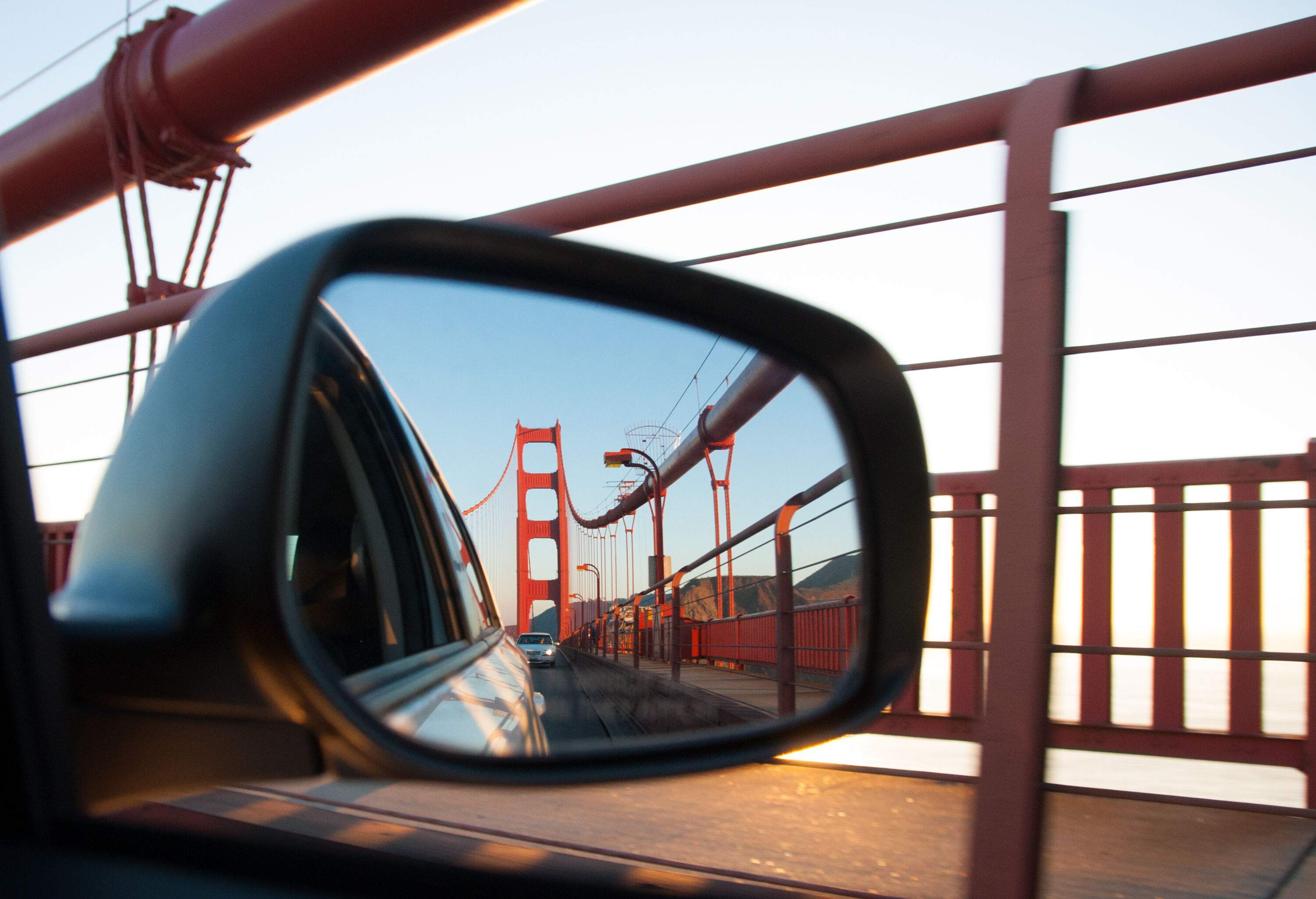Stunning Norway has an abundance of sensational landscapes and beautiful roads. The combination of well-built modern roads and sharp mountain peaks, gigantic fjords, mighty glaciers, and wild coasts is hard to beat. A Norway road trip is best done in summer when the days are longer and you have more hours to drive.
But where do you go? I am sharing a two-week road trip which really fits the description “best of Norway”.
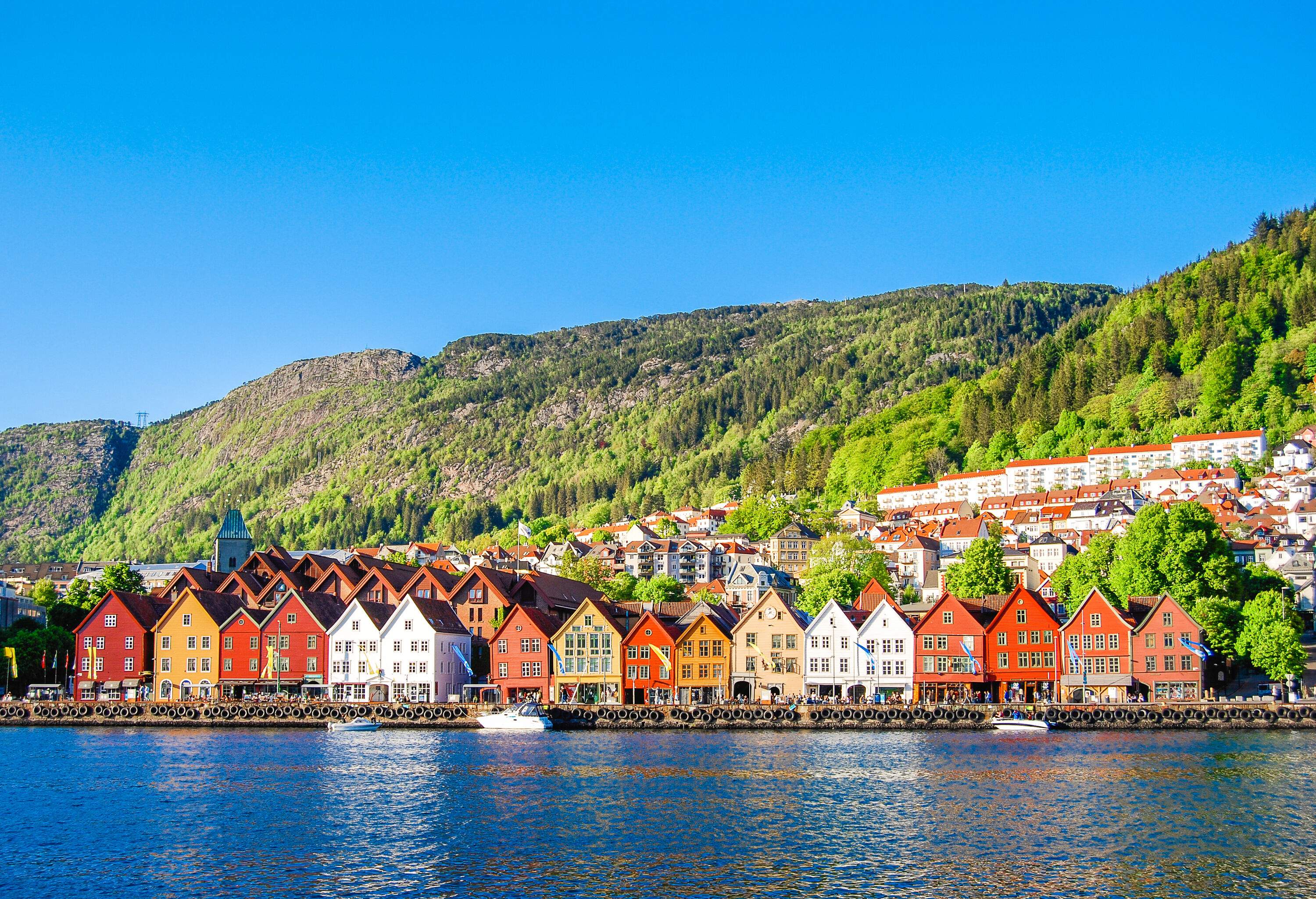
How do you get to Norway?
You will find direct flights from the U.S. to Norway with a few different airlines. Flights usually land at Oslo Airport in Gardermoen. Expect to pay on average $790 for a round trip flight NYC-Oslo and $1000 on average for LAX-Oslo.
At the airport you can pick up the rental car for your road trip and begin your vacation. Once you finish your Norway road trip in Lofoten you will need to catch a domestic flight back to Oslo before heading home.
Best time for a road trip in Norway
Summer is the best time for a Norway road trip. The period from June to August sees the warmest temperatures and the most hours of daylight. The visibility on the roads during the day is also better in summer. In addition, several of the best roads in Norway are closed during the winter, especially those that go over mountains.
But of course, the best time for a Norwegian road trip is determined by what you want to experience. If it's skiing or the northern lights that attract you, you should go in February or March. Spring and fall have certain clear advantages: with half as many visitors on the roads, there is less traffic, especially around the tourist attractions and these periods often beckon with less expensive hotel prices.
By using Weatherbase and Numbeo I have obtained data on weather, gas prices, and other local conditions which can help you plan the best possible trip.
The best car for your road trip in Norway
It’s a good idea to have some extra space in the car if you are driving longer stretches over several days. Get a car rental type that is large enough and preferably has an extra empty seat depending on how many passengers are traveling. Being cramped in the car, possibly with luggage on your lap, is no fun! And renting a good car that won’t give you any trouble is pretty easy in Norway.
Here you can find some tips when driving in Europe as well as road trip tips for your vacation in Norway.
Calculate your road trip budget
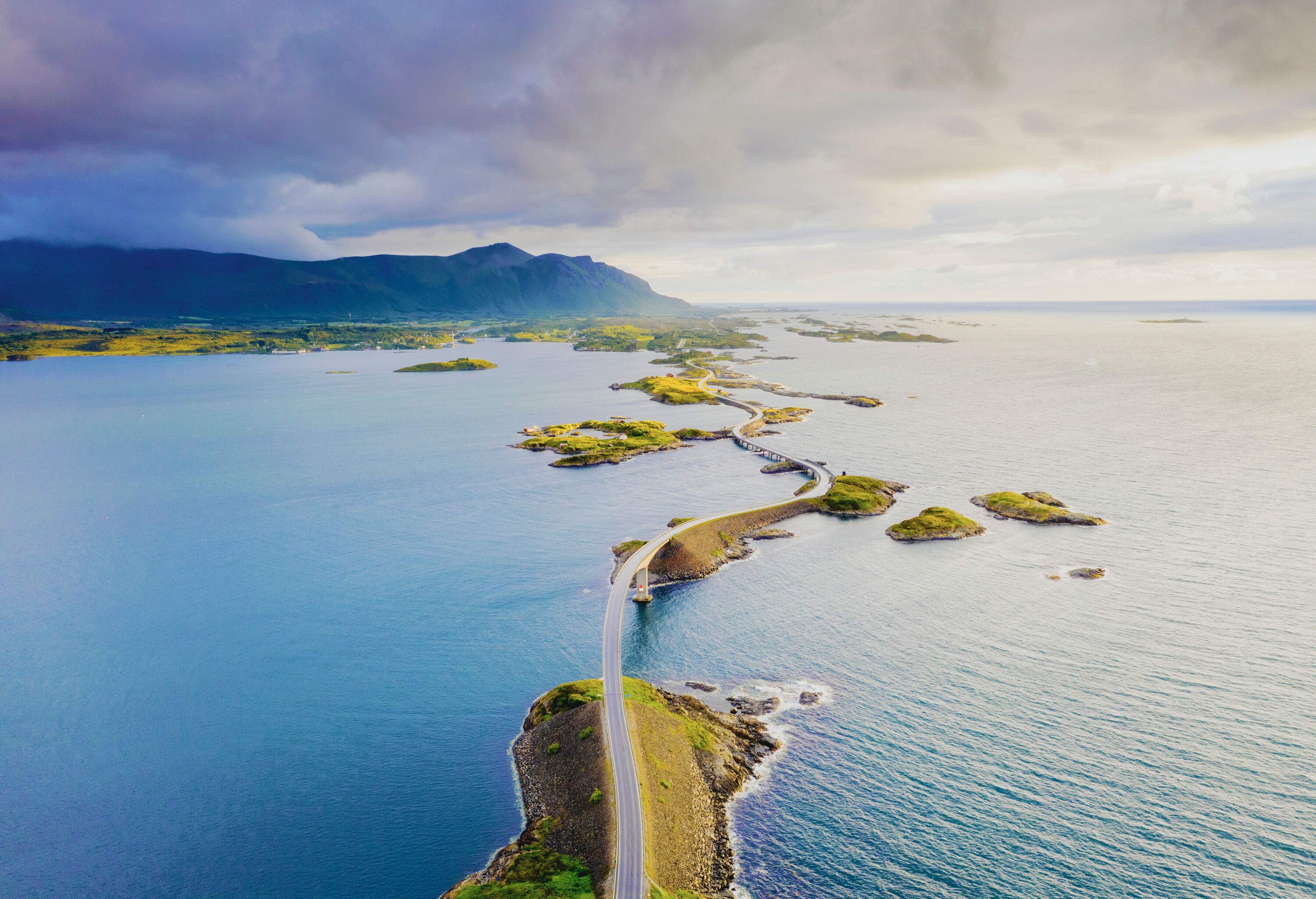
Thinking about costs is the least pleasant part when planning a Norway road trip. As you know, Norway is a rather expensive country to vacation in. Through a planned budget, you can keep track of the costs and avoid bad surprises at the end.
Car rental
The average price per day for a rental car in Oslo is NOK 1,055 (about $100). If you plan on following our first itinerary, you’ll need a car for 13 days, which brings the cost to NOK 13,715 (about $1,300) though you can find cheaper prices from time to time.
The average daily price for a rental car comes from KAYAK comparison data.
Accommodation
13 hotel nights
- Average price for a mid-range hotel, double room: NOK 1,605 ($150) per night x 13 nights = NOK 20,865 ($1,950)
- Other alternatives, like hostels, can be cheaper if you’re traveling alone: NOK 883 ($83) per night x 13 nights = NOK 11,749 ($1,079).
The average prices for hotel rooms and hostels are coming from KAYAK comparison data.
Gas
A Norway road trip itinerary that covers about 870 miles would require approximately 41 gal of gas for a medium-sized car.
Based on the price of the gallon of gas in Norway (NOK 84.2 or $7.67 in April 2024 according to numbeo.com), the total gas cost will be approximately $315.
Total cost
The total cost for accommodation, car rental and gas, for a 13-day road trip in Norway (based on two people traveling together and sharing the cost) would be approximately: NOK 18,400 ($1,700) per person with mid-range hotel accommodation.
Norway road trip itinerary: from cities to islands
Day 1: Oslo (1 night)
Norway's capital has seen a huge development in the last 15 years and is home to over 700,000 people. Today, Oslo is an exciting city, with a wide range of restaurants and entertainment. It is a perfect place to charge your batteries before you embark on your Norway road trip.
The Opera House, Vigeland Park, Akershus fortress, Holmenkollen, and the Viking ships in the Viking Shipyard (currently closed, but said to reopen in 2026) are major attractions.
There are also world-class museums such as the Munch Museum and the Norsk Folkemuseum, home to many historic buildings.
If you have time, you can ski both downhill and cross-country regardless of the season in the SNØ indoor stadium. A boat trip in the Oslo Fjord offers the opportunity to see the city from the water.
Where to stay in Oslo: Hotel Verdandi is a very central and also affordable hotel in Oslo.
Day 2 & 3: Bergen (2 nights)
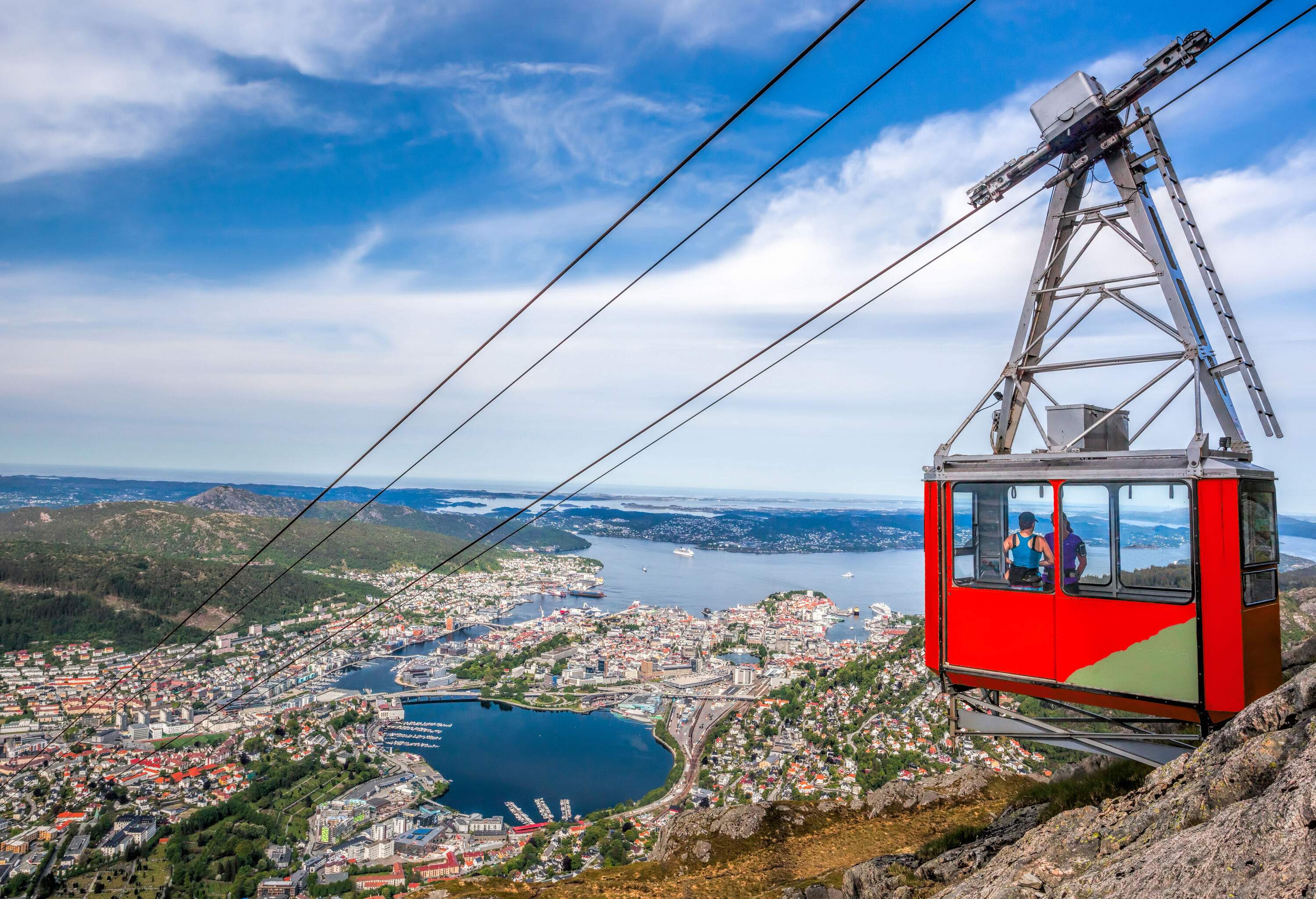
Driving distance from Oslo: 298 miles, approx. 8 hours drive
You begin by driving the E134 over Hardangervidda National Park, the largest high mountain plateau in Europe whose endless expanses lie above the tree line. That Valtatie 7 highway shows you more of Hardangervidda, but the E134 passes by Heddal Stavkyrka. This is Norway’s largest and most well-preserved stave church, a fascinating medieval cathedral made entirely of wood with many Old Norse-inspired decorations.
On the way to Bergen, magnificent fjord landscapes await. The Hardangerfjord is perhaps the most famous fjord in Norway and home to the country’s most beautiful orchards. The area is known for its special cider. If you go on the left side of the Sørfjord after the town of Odda, you will come to the manufacturer Aga Sider, which is located next to the very ancient farm Agatunet with 13th-century wooden houses.
After you take the ferry across the fjord at Jondal. You don’t want to miss the Steindalsfossen waterfall, where you can walk on a path behind the roaring, falling water curtain itself.
Today's destination is Bergen, a cultural city with a lot of history, gastronomy, and impressive surroundings. The Bryggen neighborhood is known for its colorful facades by the sea. Its strong connection to the Hanseatic period makes the area a World Heritage site and one of Norway's most visited tourist attractions. Håkonshallen is a majestic royal banquet hall from the 13th-century. The Fløyenbanan cable car takes you up to the town's nearest mountain in five minutes and offers wonderful views over the whole town.
Where to stay in Bergen: Radisson Blue Royal is located in the World Heritage Bryggen, surrounded by historical sights. It offers comfortable rooms and a lovely breakfast buffet.
Who doesn't want to brighten up their Instagram by standing on the iconic protruding rock tip Trolltunga on the Hardangerfjord? However, keep in mind that you’ll first have to brave a 7 mile steep hike uphill to get there.
Day 4: Sogndal (1 night)
Driving distance from Bergen: 173 miles, approx. 4 hours drive
Start by driving road E16 north from Bergen. You pass the Voss ski resort and soon come to the Nærøyfjord. This is perhaps the most spectacular of all Norwegian fjords because several smaller and narrow fjords converge here. The entire area is classified as a World Heritage site due to its unique character.
You continue through the Laerdal tunnel, the world's longest car tunnel with over 15 miles which is usually seen as a tourist attraction in its own right. After Laerdal, you take the ferry and then pass the Kaupanger stave church. You spend the night in Sogndal in the middle of the fjord landscape.
Where to stay in Sogndal: Hofslund Fjordhotell has a spacious garden with a pool next to the Sognefjord.
The Nærøyfjord is so special that it's time to park the car for a couple of hours and take a boat tour with one of the electric, state-of-the-art boats. You can also take what might be the train journey of a lifetime on the famous Flåm line from Flåm.
Day 5: Molde (1 night)
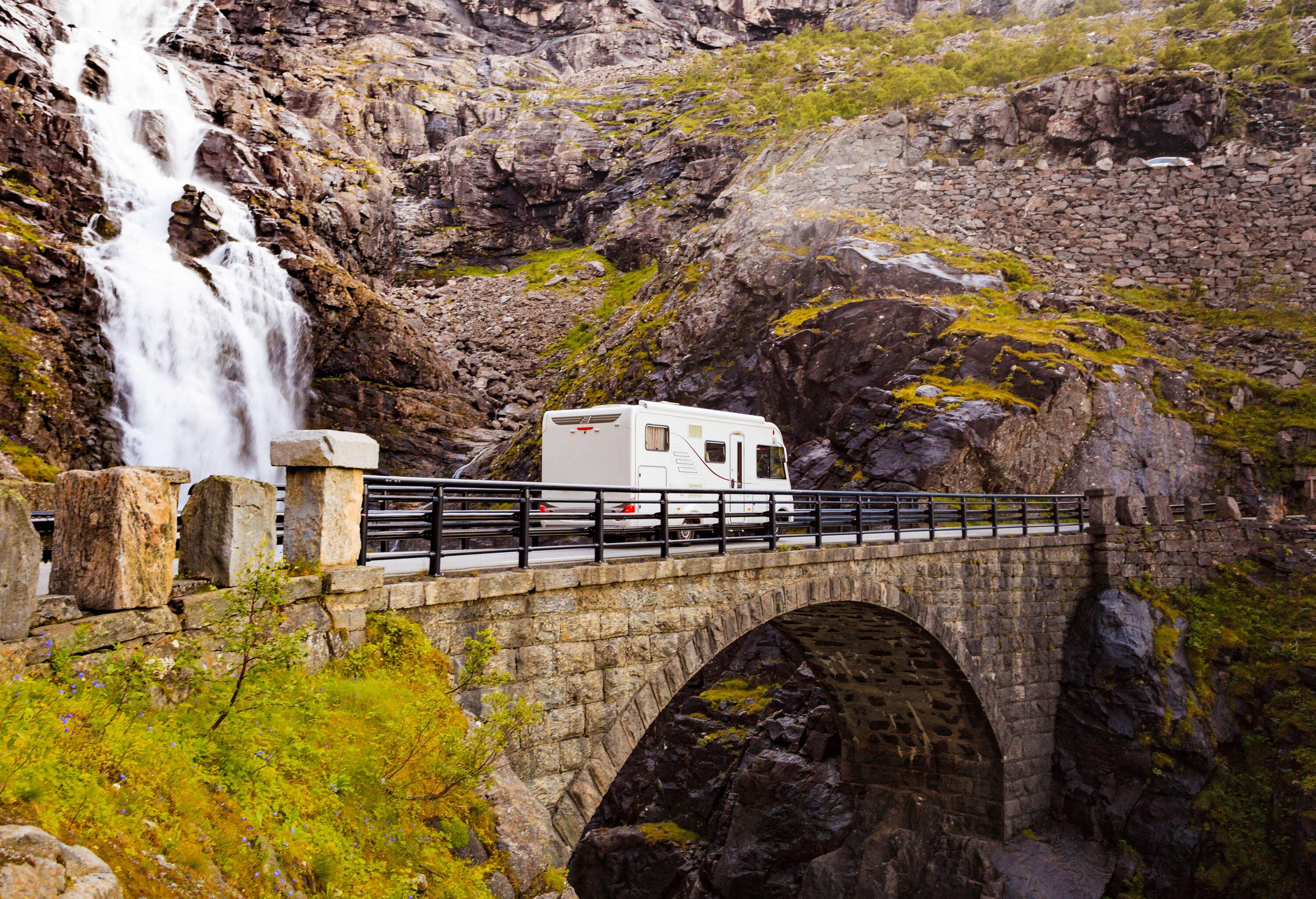
Driving distance from Sogndal: 264 miles, approx. 8 hours drive
The road over Sognefjellet is one of Norway's highest roads and stunningly scenic when the weather is good. You pass right near Galdöpiggen, Norway's highest mountain (8,100 feet). Even after Sognefjället, the road meanders through breathtaking sceneries with deep valleys and wild mountains. It honestly resembles a fictional movie world! The adventure continues on the Ørnevegen, a serpentine road that goes straight up and is almost a mile long with all its turns.
Between Sylte and Åndalsnes begins another famous stretch through idyllic Valldal, famous for its strawberries. After it is time to descend the legendary Trollstigen - another extreme serpentine road that climbs down into the beautiful mountain valley Isterdalen.
Trollstigen is not dangerous to drive as long as you take it easy. If you have time, you can drive a bit on the E136 into Romsdalen. Here you find Europe's highest vertical rock wall. The day ends with you taking the ferry from Vestnes to the attractive town of Molde.
Where to stay in Molde: Molde Fjordhotell sits on the quay in central Molde and has lovely bright rooms facing the Romdalsfjord.
Day 6 to 8: Trondheim (3 nights)
Driving distance from Molde: 157 miles, approx. 3.5 hours drive
It is an absolute must on your Norway road trip to go north from Molde to the small coastal community of Bud. From there, you follow the coast up to Kårvåg by driving the famous Atlanthavsvägen - a stretch that The Guardian called "the world's most beautiful road". This road, which runs over eight bridges and a series of treeless islands, has been used in many commercials, especially car commercials. It probably feels familiar immediately even if you are driving it for the first time!
The day ends in Trondheim, which was founded by Vikings in the 9th-century. The city has an abundance of historical sites such as Nidarosdomen Cathedral, Kristianssten fortress, Norway's best-preserved historical fort, and Munkholmen, a small island with a medieval monastery that was converted into a prison. There is also Bakklandet district, a historic neighborhood that is popular for its colorful wooden houses and cozy cafes.
Where to stay in Trondheim: Clarion Hotel Trondheim is an architectural delight paired with great views over the fjord and the city.
Day 9: Helgeland coast towards Brønnøysund (1 night)
Driving distance from Trondheim: 232 miles, approx. 6 hours drive
It only gets better. North of Trondheim awaits the Helgeland coast, one of those areas in Norway that you may not have heard of but which you will remember as one of the absolute highlights. This coast offers driving at its best.
The coastal road on National Highway 17 is a sometimes dreamlike road that starts in Steinkjer and ends, 40 miles later, in Bodö above the Arctic Circle. With continuous mountain massifs inland, you pass small fishing villages and white sandy beaches on the road as it snakes its way through an ever-changing landscape. This leg takes you to the coastal community of Brønnøysund, which is suitable for an overnight stay.
Don’t miss the island of Leka as it is something very special. Its bright red-yellow color has nothing to do with its surroundings. The island is actually a small piece of North America left in Europe!
Where to stay in Brønnøysund: Corner Hotell is a nice family-owned hotel that is affordable and centrally located in Brønnøysund.
Norway has 18 dedicated tourist roads with Kustriksveien being one of them. These roads have been designated as Norway’s most beautiful and the country has invested in their design, viewing platforms, rest areas, and bridges.
Day 10 & 11: Helgeland coast towards Bodö (2 nights)
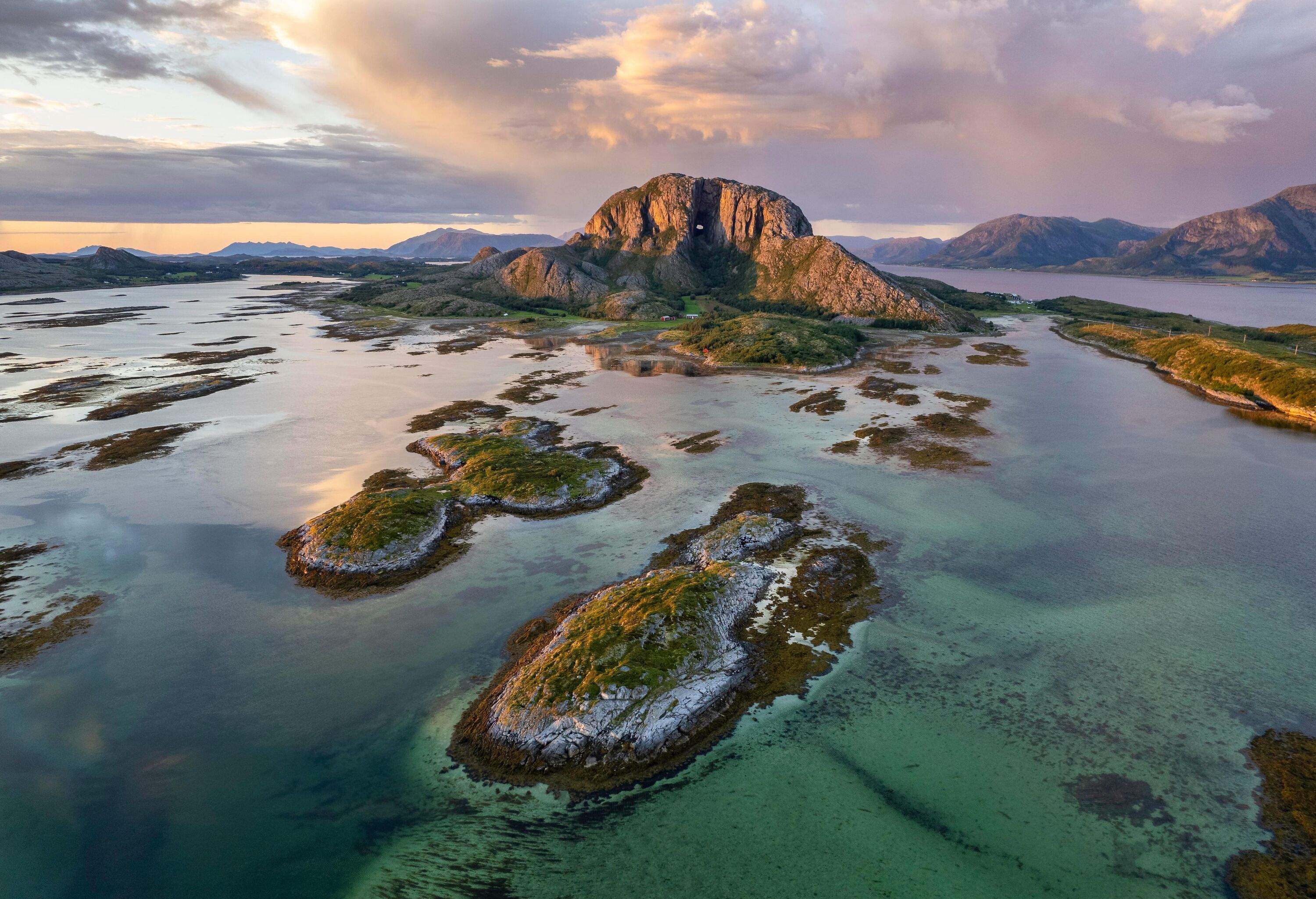
Driving distance from Brønnøysund: 331 miles, approx. 8 hours drive
The northern half of the Helgeland coast in particular offers much to experience and I would recommend staying at least an extra day. For example, you can take a boat out to the 6,500 Vega islands for hiking and paddling in incomparable nature, surrounded by thousands of Puffins. The boats out here depart from Horn just north of Brønnøysund, where you spent the night.
Worth mentioning is the huge mountain Torghatten near Brønnøysund. It has a hole in the middle through which you can see the sun setting. Also, don't miss Svartisen National Park with its rare beautiful glacier.
Where to stay in Bodö: Scandic Havet is a modern and comfortable hotel with panoramic views that can arrange various day trips.
The views from Rødøyløva mountain on the island of Rødøy beat almost anything I've seen.
Day 12 & 13: Lofoten (2 nights)
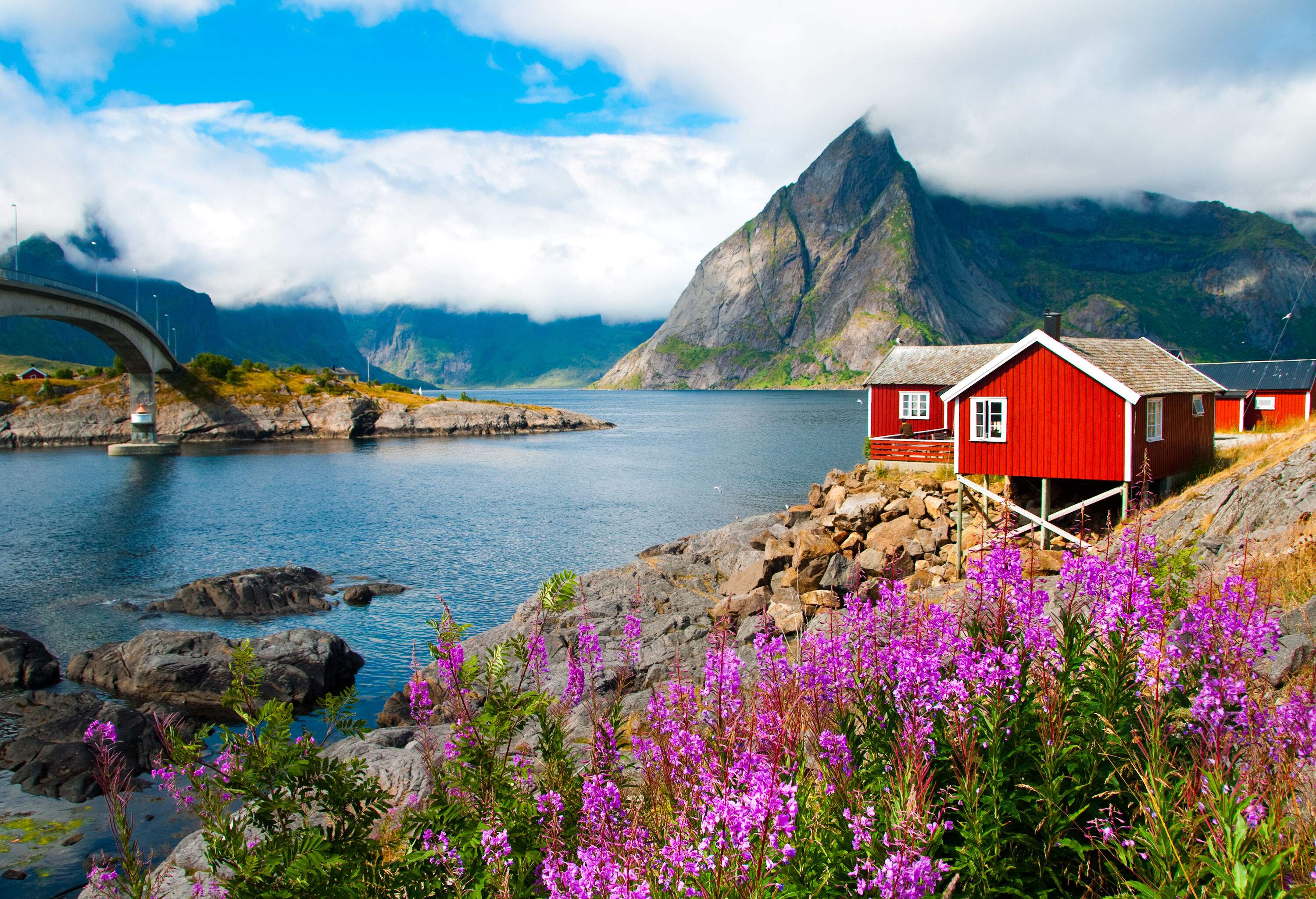
Driving distance from Moskenes to Svolvear on Lofoten: 77 miles, approx. 2 hours drive
From Bodö you can save yourself a lot of driving if you take the ferry directly to Moskenes on Lofoten. Lofoten is something of a world in itself and should not be missed. They can be described as an extremely dramatic mountain range. The countless pointed mountains stretch out into the North Atlantic and become a row of islands at the far end.
But not only the spectacular landscapes draw visitors. On Lofoten, there are many activities to try and a lot of traditional culture remains in the small, interesting fishing villages. For drivers who are doing a Norway road trip, it is a pleasure to drive on these roads that wind between mountains and the sea.
Where to stay on Lofoten: Thon Hotel Lofoten in Svolvear offers you nice views of the harbor and the city.
Kaviar Factory is an unexpectedly good museum of modern art in Henningsvaer, a fishing village built on the islands and a major tourist attraction in itself.
Conclusion
Driving through Norway's ever-dramatic landscapes is one of a kind. A road trip in Norway is something far beyond the ordinary and offers a journey that passes fjords, mountains, history, culture, and wonderful people. The only disadvantage might be the fact that Norway is a bit pricey, but if you set your budget before it is not too bad. And even though this guide contains a lot, there is much more in Norway to discover - you may have to book another flight immediately!
The hotel recommendations included in this article are based on customer ratings and the author's personal choices, so please feel free to use our hotel search tool to find the accommodation best suited to your needs.

